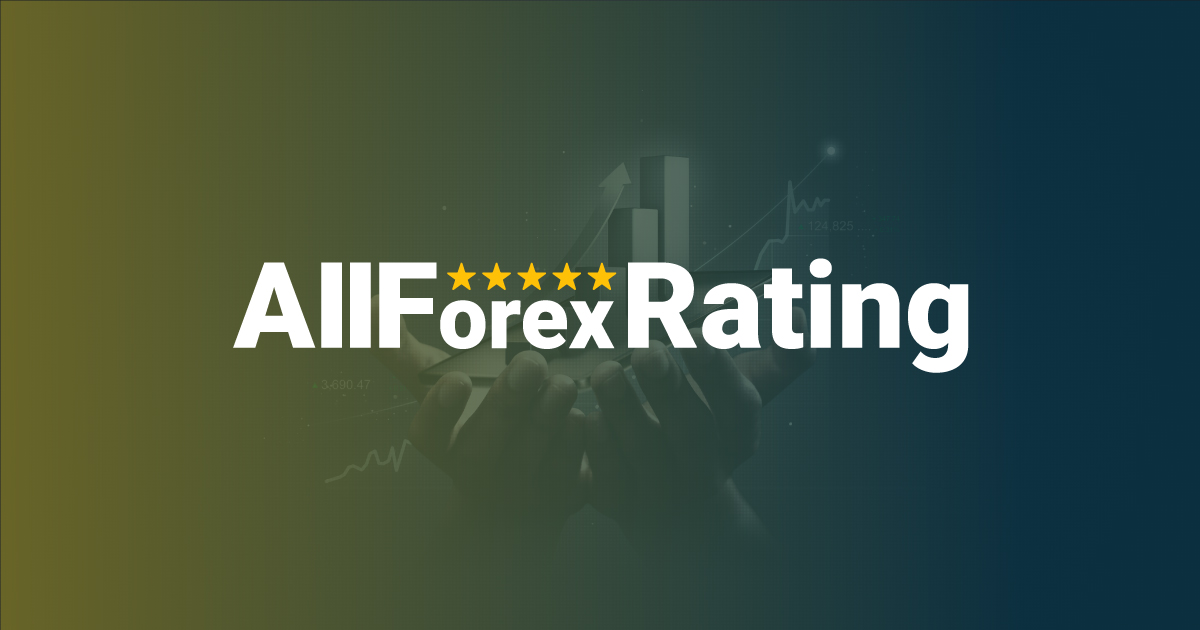What Is Forex Trading and How Does It Work?
What Is Forex Trading and How Does It Work?
Forex trading, also known as foreign exchange trading has grown to be the world's largest financial industry, with over USD 6 trillion trade volume per day.
-

- by ALLFOREXRATING.COM
- 30th June 2022 | Post Views: 1411

Forex trading is buying and selling currencies or exchanging to earn. It has grown to be the leading commercial market, and you shouldn't need much capital to get engaged. Here, I will define forex trading and discuss some of the benefits that you need to know before participating.
Forex trading, also known as foreign exchange trading has grown to be the world's largest financial industry, with over USD 6 trillion trade volume per day.
In this context, I will discuss what is forex trading and how it works. Let’s go through it.
A Basic Understanding of Forex Trading
A system of buyers and sellers who interchange currencies at predetermined prices is what is meant by the term "forex," or foreign exchange. If you have ever been overseas, you have probably engaged in some type of forex transaction. It is simply the process through which people, businesses, and central banks swap one currency into another.
Though a lot of currency conversion is performed for functional reasons, a great proportion is done to make a profit. Some currencies' price swings might be particularly erratic due to the volume of currency that is converted each day. This unpredictability, which increases both the danger and the potential for huge returns, is what can make forex trading so alluring to investors.
How Does the Forex Market Act?
In contrast to trading in shares or products, forex trading occurs straight between two entities in an over-the-counter (OTC) market. A worldwide network of banks that are dispersed among four significant forex trading hubs in various time zones manage the forex market.
You can trade forex seven days a week, twenty-four hours a day because there is no centralized place. Nevertheless, the force of supply and demand is what essentially causes price swings in forex trading, thus it is crucial to know these factors.
Steps Of Forex Trading
Forex trading can be done in several ways, but it always involves concurrently purchasing one currency and selling another. Although many forex dealings were previously carried out through a broker, the growth of online investing has made it possible to profit from changes in the exchange rate utilizing derivatives such as CFD trading.
CFDs are skewed products that let you start a contract for a small portion of the total trading volume. In contrast to non-leveraged goods, you don't possess the property; instead, you stake a bet on if you believe the stock will increase in value or decrease. Securitized products can increase your earnings, but if the market goes against you, they can also increase your costs.
Now the steps are:
- Choose your trading style for FX.
- Discover exactly how the FX market operates.
- Create a business plan and sign up for an account
- Select a website or network platform for exchanging currencies.
- Open, watch, and then close the initial position.
An Example of Forex Trading
GBP/USD, for example, has a selling price of 1.35540, and a purchasing price of 1.35560. You choose to sell five standard lots at 1.35540 as you believe the pound would depreciate versus the US dollar as a result of a potential Bank of England interest rate decrease.
Each contract is worth 100,000 of the pair's base currency. Selling a single GBP/USD standard contract in this scenario entails exchanging £100,000 for $135,540, making the total value of your position $677,700 (£500,000). The required margin for a deal of this magnitude on GBP/USD is 0.50 %, thus your margin would be 0.50 % of your investment's total exposure, which is $3,388.50 (£2,500).
When the buy price reaches 1.35440, you choose to exit your trade if your forecasting was accurate. However, if your prediction turns out to be incorrect, you choose to stop losing money and cancel your deal when the purchasing price is 1.35700. Your position has swung 16 points against you, resulting in an $800.00 loss for you.
When Should I Purchase It?
If a dealer believes that the price of a particular base currency will rise, he or she will execute a purchase or long position.
Timing Of Sell
If a dealer believes that the price of a particular base currency will fall, they will execute a sell or short position.
What Is Spread?
The spread is the difference between the stated buyers' and sellers' prices for a currency pair. When you establish a forex transaction, you will be offered two prices, as is common in many capital sectors. To begin a large position, you exchange at the purchase price, which is somewhat higher than the price. To initiate a particular stock, you exchange at the trading price, which is somewhat cheaper.
Pros And Cons of Forex Trading
Pros are discussed below:
- Forex trading is a massive worldwide marketplace, which implies there are numerous trading options.
- Because there is a huge money market, the vast numbers of transactions that occur per day make it simpler to acquire or focus on sales rapidly.
- You don't need a huge amount of money to begin forex trading, and you may utilize leveraging to increase your investing opportunities.
- Forex trading is open 24 hours a day, seven days a week, unlike other markets, which have fixed trading hours throughout the week.
Cons of forex trading are
- Currency values vary continuously and may be highly unexpected.
- Trading huge quantities of cash with leveraging increases your chance to lose money if the value of money falls.
- Some countries impose trading restrictions on how much money can be traded at a given rate at various periods.
- Fluctuations in the exchange rate may have an impact on your income when it is translated back into the currencies you took your gains in.
Conclusion
Forex trading is a quick and thrilling alternative, and some investors will only operate this investment model. They may even opt to specialize in only a few specific forex pairings, devoting a significant amount of effort to comprehending the myriad financial and political aspects that influence particular assets.
Write a Comment
What Is Forex Trading and How Does It Work?
Forex trading, also known as foreign exchange trading has grown to be the world's largest financial industry, with over USD 6 trillion trade volume per day.

Forex trading is buying and selling currencies or exchanging to earn. It has grown to be the leading commercial market, and you shouldn't need much capital to get engaged. Here, I will define forex trading and discuss some of the benefits that you need to know before participating.
Forex trading, also known as foreign exchange trading has grown to be the world's largest financial industry, with over USD 6 trillion trade volume per day.
In this context, I will discuss what is forex trading and how it works. Let’s go through it.
A Basic Understanding of Forex Trading
A system of buyers and sellers who interchange currencies at predetermined prices is what is meant by the term "forex," or foreign exchange. If you have ever been overseas, you have probably engaged in some type of forex transaction. It is simply the process through which people, businesses, and central banks swap one currency into another.
Though a lot of currency conversion is performed for functional reasons, a great proportion is done to make a profit. Some currencies' price swings might be particularly erratic due to the volume of currency that is converted each day. This unpredictability, which increases both the danger and the potential for huge returns, is what can make forex trading so alluring to investors.
How Does the Forex Market Act?
In contrast to trading in shares or products, forex trading occurs straight between two entities in an over-the-counter (OTC) market. A worldwide network of banks that are dispersed among four significant forex trading hubs in various time zones manage the forex market.
You can trade forex seven days a week, twenty-four hours a day because there is no centralized place. Nevertheless, the force of supply and demand is what essentially causes price swings in forex trading, thus it is crucial to know these factors.
Steps Of Forex Trading
Forex trading can be done in several ways, but it always involves concurrently purchasing one currency and selling another. Although many forex dealings were previously carried out through a broker, the growth of online investing has made it possible to profit from changes in the exchange rate utilizing derivatives such as CFD trading.
CFDs are skewed products that let you start a contract for a small portion of the total trading volume. In contrast to non-leveraged goods, you don't possess the property; instead, you stake a bet on if you believe the stock will increase in value or decrease. Securitized products can increase your earnings, but if the market goes against you, they can also increase your costs.
Now the steps are:
- Choose your trading style for FX.
- Discover exactly how the FX market operates.
- Create a business plan and sign up for an account
- Select a website or network platform for exchanging currencies.
- Open, watch, and then close the initial position.
An Example of Forex Trading
GBP/USD, for example, has a selling price of 1.35540, and a purchasing price of 1.35560. You choose to sell five standard lots at 1.35540 as you believe the pound would depreciate versus the US dollar as a result of a potential Bank of England interest rate decrease.
Each contract is worth 100,000 of the pair's base currency. Selling a single GBP/USD standard contract in this scenario entails exchanging £100,000 for $135,540, making the total value of your position $677,700 (£500,000). The required margin for a deal of this magnitude on GBP/USD is 0.50 %, thus your margin would be 0.50 % of your investment's total exposure, which is $3,388.50 (£2,500).
When the buy price reaches 1.35440, you choose to exit your trade if your forecasting was accurate. However, if your prediction turns out to be incorrect, you choose to stop losing money and cancel your deal when the purchasing price is 1.35700. Your position has swung 16 points against you, resulting in an $800.00 loss for you.
When Should I Purchase It?
If a dealer believes that the price of a particular base currency will rise, he or she will execute a purchase or long position.
Timing Of Sell
If a dealer believes that the price of a particular base currency will fall, they will execute a sell or short position.
What Is Spread?
The spread is the difference between the stated buyers' and sellers' prices for a currency pair. When you establish a forex transaction, you will be offered two prices, as is common in many capital sectors. To begin a large position, you exchange at the purchase price, which is somewhat higher than the price. To initiate a particular stock, you exchange at the trading price, which is somewhat cheaper.
Pros And Cons of Forex Trading
Pros are discussed below:
- Forex trading is a massive worldwide marketplace, which implies there are numerous trading options.
- Because there is a huge money market, the vast numbers of transactions that occur per day make it simpler to acquire or focus on sales rapidly.
- You don't need a huge amount of money to begin forex trading, and you may utilize leveraging to increase your investing opportunities.
- Forex trading is open 24 hours a day, seven days a week, unlike other markets, which have fixed trading hours throughout the week.
Cons of forex trading are
- Currency values vary continuously and may be highly unexpected.
- Trading huge quantities of cash with leveraging increases your chance to lose money if the value of money falls.
- Some countries impose trading restrictions on how much money can be traded at a given rate at various periods.
- Fluctuations in the exchange rate may have an impact on your income when it is translated back into the currencies you took your gains in.
Conclusion
Forex trading is a quick and thrilling alternative, and some investors will only operate this investment model. They may even opt to specialize in only a few specific forex pairings, devoting a significant amount of effort to comprehending the myriad financial and political aspects that influence particular assets.
| # | Forex Broker | Year | Status | For | Against | Type | Regulation | Leverage | Account | Advisors | ||
| 1 |  |
JustMarkets | 2012 | 36% | 4% | ECN/STP | FSA, CySEC, FSCA, FSC | 1:3000* | 1 | Yes | ||
|---|---|---|---|---|---|---|---|---|---|---|---|---|
| 2 |  |
Hantec Markets | 1990 | 35% | 6% | ECN/STP | ASIC, FCA, FSA-Japan, FSC, JSC | 1:2000* | 100 | Yes | ||
| 3 |  |
Valetax | 2023 | 35% | 1% | ECN/STD | FSC | 1:2000* | 10 | Yes | ||
| 4 |  |
KCM Trade | 2016 | 32% | 3% | ECN/STD | FSC | 1:400* | 100 | Yes | ||
| 5 |  |
Plotio | 1983 | 31% | 2% | STP | HKGX, ASIC, SCB | 1:300* | 200 | Yes | ||
| 6 |  |
FISG | 2011 | 30% | 1% | ECN/STD | FSA, CySEC, ASIC | 1:500 | 0.01 | Yes | ||
| 7 |  |
ATFX | 2017 | 25% | 3% | Broker/NDD | FCA, CySEC, FSCA | 1:400* | 100 | Yes | ||
| 8 |  |
Octa | 2011 | 20% | 3% | ECN/STD | Regulation: CySEC, MISA, FSCA and FSC | 1:1000* | 5 | Yes | ||
| 9 |  |
Youhodler | 2018 | 20% | 2% | Exchange | EU (Swiss) licensed | Up to 1:500 | 100 | Yes | ||
| 10 |  |
Uniglobe markets | 2015 | 20% | 3% | ECN/STP | Yes | Up to 1:500 | 100 | Yes | ||
| 11 |  |
IEXS | 2023 | 20% | 6% | ECN/STP | ASIC, FCA | Up to 1:500 | 100 | Yes | ||
| 12 |  |
TradeEU | 2023 | 18% | 4% | CFDs | CySEC | 1:300* | 100 | Yes | ||
| 13 |  |
RoboForex | 2009 | 16% | 4% | ECN/STD | FSC, Number 000138/333 | 1:2000* | 10 | Yes | ||
| 14 |  |
Axiory | 2011 | 15% | 5% | Broker, NDD | IFSC, FSC, FCA (UK) | 1:777* | 10 | Yes | ||
| 15 |  |
FBS | 2009 | 13% | 4% | ECN/STD | IFSC, CySEC, ASIC, FSCA | 1:3000* | 100 | Yes |











